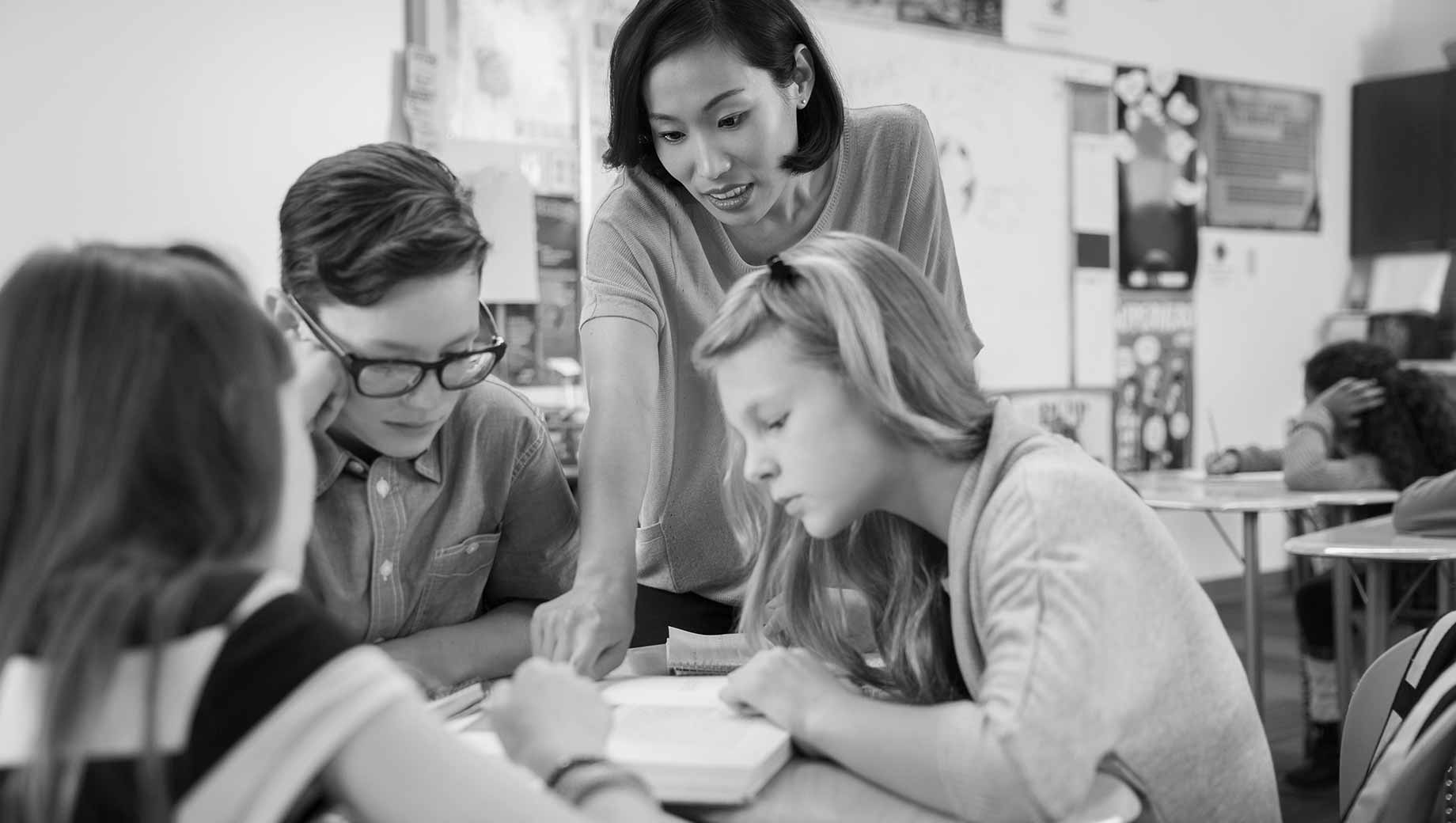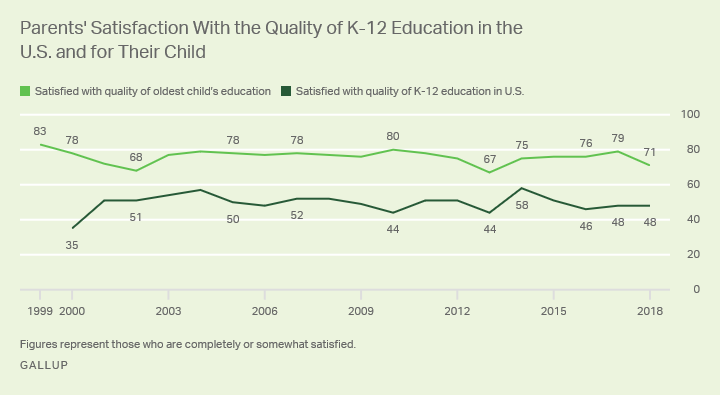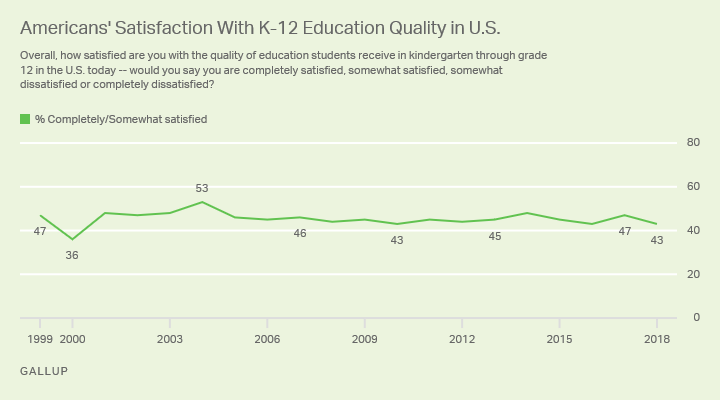
As children across the U.S. begin a new school year, parents continue to be much more satisfied with the quality of the education their child is receiving than with K-12 education in the U.S. overall. Seven in 10 parents with school-aged children are “completely” or “somewhat” satisfied with the quality of their oldest child’s education, while 48% say the same about the quality of K-12 education in the U.S.

Since 1999, when Gallup first started asking these two questions every August, there has been a consistent, sizable gap between parents’ satisfaction with their child’s education and their views of U.S. education in general.
Parents’ current satisfaction with their child’s education, from an Aug. 1-12 poll, is slightly below the historical average of 76% and is also down slightly from last year’s 79% reading. It is marginally higher than the lowest points on this measure — 67% in 2013 and 68% in 2002. The highest level, 83%, was in 1999.
Parents of school-aged children mirror the attitudes of all Americans when it comes to rating the quality of education in the nation’s schools. Currently, 43% of Americans are satisfied, slightly below the 48% of parents of K-12 students who are satisfied.

The current 43% satisfaction rating by all Americans for K-12 education in the U.S. is very close to the historical average of 45%. The low point in public satisfaction with the nation’s schools over this 20-year trend was 36% in 2000, when education was a key issue in the presidential election. The 53% high point in satisfaction in 2004 was the only time more Americans were satisfied than dissatisfied. The higher level that year was primarily driven by Republicans’ positivity as President George W. Bush’s “No Child Left Behind” education reforms began to take hold.
Partisans’ satisfaction with the quality of the nation’s K-12 education in some instances tracks with who occupies the White House. When the president is a Republican, rank-and-file Republicans have often shown somewhat higher levels of satisfaction than Democrats have, and the same is true of Democrats under a Democratic president.
There have been times in each presidential administration when there has been little to no difference between Republicans’ and Democrats’ satisfaction. That is the case now, as 45% of Democrats and Democratic-leaning independents and 43% of Republicans and Republican-leaning independents say they are completely or somewhat satisfied with the quality of U.S. education.

Although Republicans’ and Democrats’ satisfaction levels are currently similar, they represent a marked change from two years ago. In August 2016, with Barack Obama in office, 53% of Democrats and 32% of Republicans were satisfied with the nation’s K-12 education. In August 2017, after Donald Trump took office, Republican satisfaction rose 11 percentage points while Democratic satisfaction edged down two points.
While Republican satisfaction is currently unchanged from last year, satisfaction among Democrats has declined an additional six points, marking an eight-point two-year drop since Trump became president — and creating the current situation in which satisfaction is essentially equal between both partisan groups.
Bottom Line
Parents of children in kindergarten through 12th grade in the U.S. remain much more satisfied with the quality of their child’s education than U.S. education overall. This trend, which has endured for two decades, is further evidence of a common pattern in Gallup polling that finds more positivity about one’s own situation than the same issue or entity on a larger national scale. Similar patterns are consistently seen in Americans’ assessments of healthcare, crimeand elected officials.
Americans’ current level of satisfaction with K-12 education in the U.S. is close to the historical average and reflects typical partisan changes following a change in the party occupying the White House. As the Trump administration continues its efforts to shrink the federal government’s role in K-12 education and push for school vouchers, Republicans’ satisfaction may increase while Democrats’ may continue to sink.
source:-gallup
